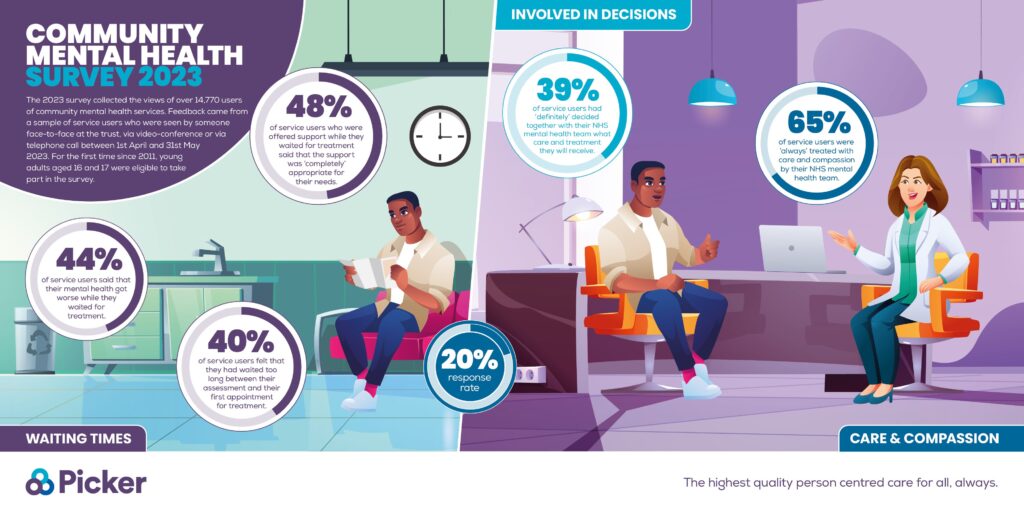Could monthly tracking improve NHS staff morale?
Reports have claimed that the government wants to launch a new regular survey of staff morale as part of efforts to make the NHS the best place to work. But is morale tracking all it’s cracked up to be? Chris Graham argues that monthly tracking may not be as straightforward as may be hoped.
As we begin a new year and a new decade, those returning to work may find themselves with a lot to digest. It’s not just memories of too-generous Christmas lunches; our plates have been similarly overstuffed with news about politics, international affairs, and, of course, NHS performance. In this context, readers may be forgiven if they missed an HSJ exclusive from the eve of the UK general election describing Number 10’s apparent plans to create a new ‘staff morale tracker’ for the NHS.
At first glance, tracking morale seems like a good idea. The ultimate aim of the NHS is to deliver high quality care, and there is plenty of evidence both of how dependent this is on workforce experience and of how the wellbeing of the workforce is related to system pressures. Maintaining and improving morale is important, and to track progress on this the system needs measures of how well things are going from the perspective of staff. But the idea of creating a new ‘staff morale tracker’ begs a number of questions – particularly as the NHS already gathers staff feedback regularly and extensively through the annual NHS Staff Survey (NSS) and the quarterly NHS Staff Friends and Family Test (FFT).
Defining morale
Any good measure needs to start from a clear definition. Defining ‘morale’ is not straightforward. Although commonly used, the term is ill-defined and frequently multiply conceptualised. This has led to researchers tending to focus on narrower and better-defined elements of morale, and Hardy [1] describes “the morale concept [as having been] dismembered… portioned off and subsumed into terms such as job satisfaction, job involvement, organisational commitment and group cohesion”. Where modern studies do address morale, this often involves a broad, multi-conceptual interpretation. For example, a recent review of the literature on employee engagement in the NHS (Bailey et al.,2015 [2]) used a broad interpretation of morale encompassing both work-related attitudes (including organisational commitment, workplace satisfaction, and intention to leave) and personal health and wellbeing perceptions (including life satisfaction, health and mood, stress, and so on).
Broad definitions present a problem for measurement. We can’t simply ask staff ‘how’s your morale today?’ or ‘how was work?’ because everyone interprets these questions differently. To get a consistent, trackable measure, we need to ask questions that can be understood consistently, and this means using simple, direct concepts. If morale is broadly defined, there is unlikely to be a meaningful, valid way of understanding it with a single question or even with a small set of questions.
A further issue with definitions that include non-workplace factors like mood or life satisfaction is that they are inherently and intensely subjective – and thus may not be amenable to action by employers. NHS organisations can act if their staff say they don’t have regular appraisals, that senior managers don’t communicate well, or that they suffer harassment or discrimination: with the best will in the world, however, they cannot be expected to take full responsibility for employees’ overall life satisfaction. Broad morale measures risk becoming a hostage to fortune for NHS employers, because the potential for wider social or economic factors to weigh down morale in spite of their efforts is enormous.
Measuring morale
Secondly, good measures require good methods. The NHS already has a gold-standard staff survey that is conducted with a huge and representative sample (almost half a million staff responded in 2018 alone). The survey has recently added a theme titled ‘morale’, which is made up of questions about employees’ relationships with colleagues, workplace pressures, and intention to leave. The selection of items is based on published research (eg Gilbody et al., 2006 [3]) to bring together a range of related concepts together with other questions on health and wellbeing it provides a good baseline for understanding workplace morale. Its only significant limitation for the kind of tracking sought here is its frequency: annual rather than monthly.
There is a particular challenge inherent to surveying staff, which is that they represent a finite stock of potential respondents that is only very slowly replenished. In the 2018 NHS Staff Survey, for example, more than a quarter of respondents had worked for their current organisation for more than 15 years. Repeating surveys – especially on a large-scale – will inevitably mean individuals being invited to complete the survey time and time again. The effort and time involved in doing this therefore needs to be proportionate to the frequency and value of the collection, otherwise staff will lose interest in participating and response rates will drop. Unusually, the NHS Staff Survey has improved its response rates over recent years, bucking industry trends in part because its value has become more and more apparent.
It is hard to see how a monthly or more frequent measure of staff feedback could both ensure representativeness (especially in smaller organisations with fewer employees to approach) and maintain relevance to staff. Any measure based on self-selection (for example any that allows all staff to record their morale as and when they feel it relevant) would not only suffer from poor representativeness, but could easily be manipulated by staff or employers to create biased results.
Outcomes of measurement
The outcome of measuring and reporting morale is also doubtful. If a tracker – however unscientific or imprecise – led to genuine improvements in staff morale then it would undoubtedly be justified. This seems doubtful, however – not just because some elements of morale are beyond the reach of employers but also because measurement alone is not sufficient for improvement. There is also an important question about how staff will react to being repeatedly asked about their morale, particularly if results do not improve or, worse, decline. The simple act of continually asking without appearing to take action could have an adverse effect on morale, making employers appear insensitive and mechanistic.
Ultimately, all measures should be designed with their aims firmly in mind. If the purpose of a staff morale tracker were to understand morale at system level, then this is realistically achievable with a small monthly sample of NHS staff. An organisational-level tracker is orders of magnitude more complicated, and the necessity of asking many questions to comparatively small groups of staff risks unacceptable compromises around representativeness and/or validity. If a new measure is to be introduced, then it needs to be developed with skill and care to overcome these challenges. This is unlikely to be straightforward. The NHS should be wary of specious solutions to tracking morale, because they risk creating data that is at best misleading and at worst has unintended and deleterious consequences for staff experiences in the health service.
References
[1] Hardy, B. (2009). Morale: Definitions, Dimensions, and Measurement [PhD Dissertation]. University of Cambridge
[2] Bailey, C., Madden, A., Alfes, K., Fletcher, L., Robinson, D., Holmes, J., Buzzeo, J., & Currie, G. (2015). Engagement and morale. NIHR Journals Library. https://www.ncbi.nlm.nih.gov/books/NBK299339/
[3] Gilbody, S., Cahill, J., Barkham, M., Richards, D., Bee, P., & Glanville, J. (2006). Can we improve the morale of staff working in psychiatric units? A systematic review. Journal of Mental Health, 15(1), 7–17. https://doi.org/10.1080/09638230500512482

